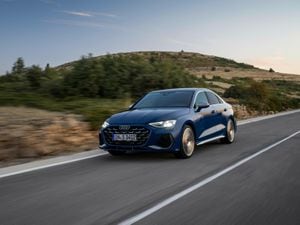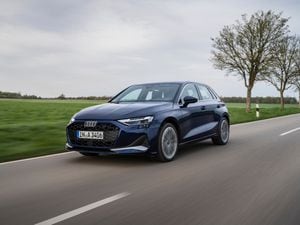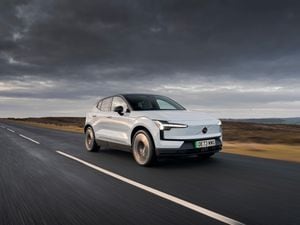First Drive: The Peugeot e-308 is a stylish and well-rounded EV
Peugeot is extending its EV line-up with the new e-308. Ted Welford tries it out
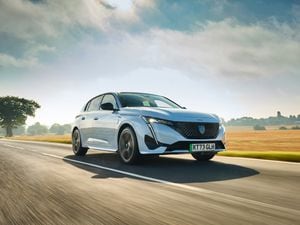
What is it?

When it comes to mainstream electric cars, Peugeot is doing better than most. It’s already got battery-powered versions of its popular 208 and 2008, while all of its vans and the associated passenger-carrying versions come in an electric guise too.
The next step comes in the form of the e-308 – the electric version of one of Peugeot’s core models. Available at first as a hatchback, an e-308 SW will follow as one of the first electric estate cars. But this Peugeot already faces some tough competition in the form of the MG4 and Volkswagen ID.3, so is it good enough to succeed?
What’s new?
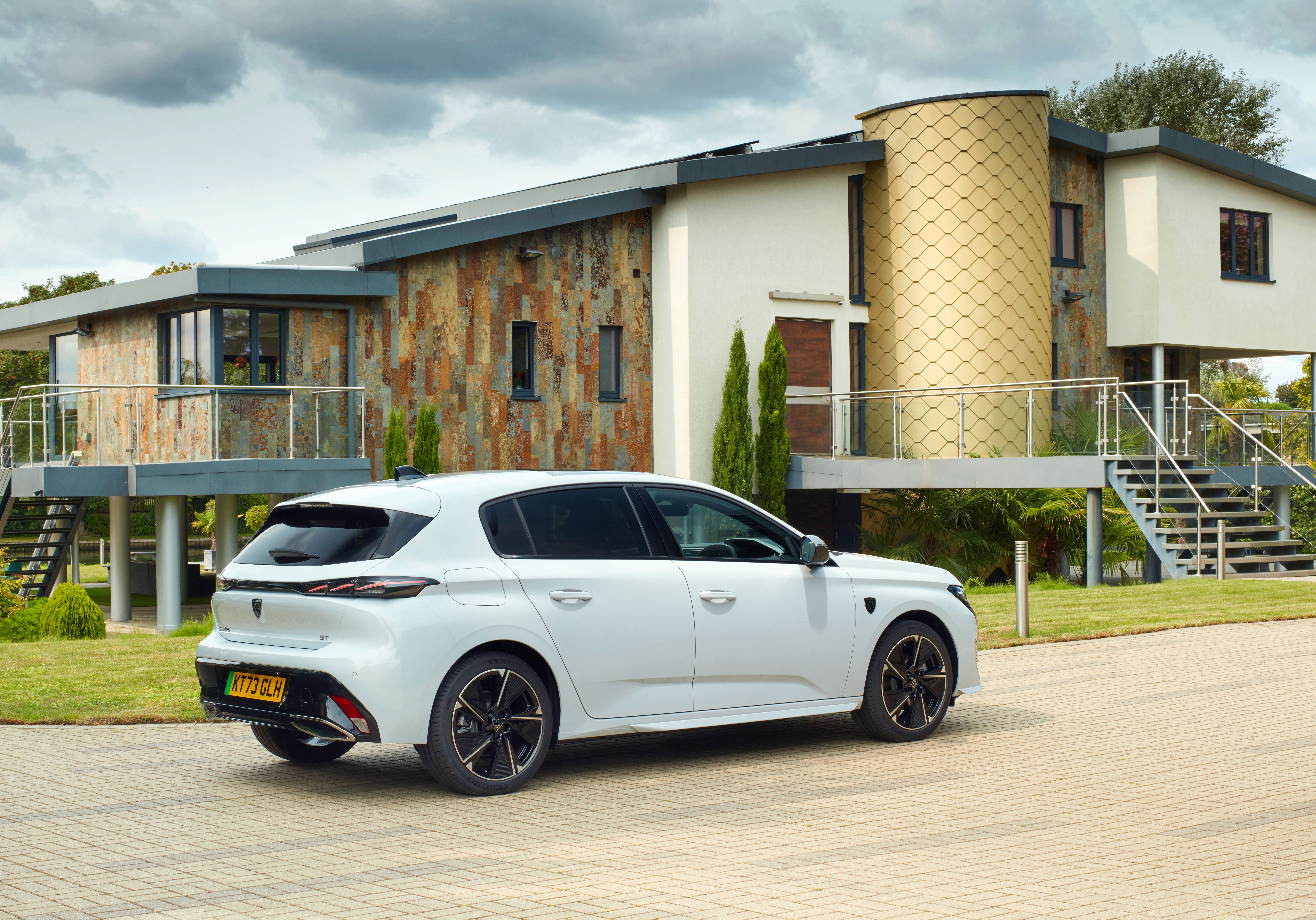
Unlike some other marques that create bespoke electric-only models, Peugeot instead uses existing models as EVs. So alongside the existing petrol, diesel and plug-in hybrid versions of the 308, there’s now the option for an EV.
Aside from the badging and some unique 18-inch alloy wheels, it’s business as usual, but given the new Peugeot 308 is still fairly fresh with its striking design and high-tech interior, that isn’t necessarily a bad thing.
What’s under the bonnet?

The e-308 uses a powertrain that’s gradually being rolled out across the wider Stellantis group’s electric line-up.
Using a front-mounted electric motor producing 154bhp and 270Nm of torque, the e-308 can accelerate from 0-60mph in 9.6 seconds and on to a top speed of 106mph.
The new e-308 is also equipped with a 54kWh battery, based on a new generation of technology that allows this Peugeot to travel for a claimed 257 miles of range. It’s impressive efficiency for something with a battery of this size. In terms of recharging, with a 100kW rapid charger, it can be topped up from 20 to 80 per cent in half an hour, or four hours and 25 minutes using a home wallbox.
What’s it like to drive?

Jump inside the e-308 and everything feels quite familiar next to the petrol car – you’ve got the same driving position and excellent digital dials. Aside from the obvious near-silent running, it all feels quite ordinary for an EV. The power delivery is smooth, but it lacks the urgency you get from rivals like the MG4. It’s not slow by any means, but it’s odd for this e-308 to not be any quicker than less powerful versions of the regular petrol model.
Though it’s around 400kg heavier than the standard petrol 308, Peugeot has done well to keep this electric model’s weight in check. There’s no more noticeable body roll through the corners, and the ride is excellent, being more comfortable than rivals from MG and Volkswagen that have a firmer setup.
How does it look?
Peugeot‘s latest 308 made quite a statement when it arrived on sale last year, with its funky patterned grille and large ‘Claw’ headlights most certainly giving it some of the most presence of any family hatchback There are some brilliant colours available too – including the free Olivine Green and Vertigo Blue.
We reckon Peugeot could have done a little more to distinguish the electric models from the rest of the range, though. Though there are new wheels for the e-308, they’re almost identical to those of the standard car. You’ll also still find chrome exhaust trim on the rear end, which just seems strange for an EV.
What’s it like inside?
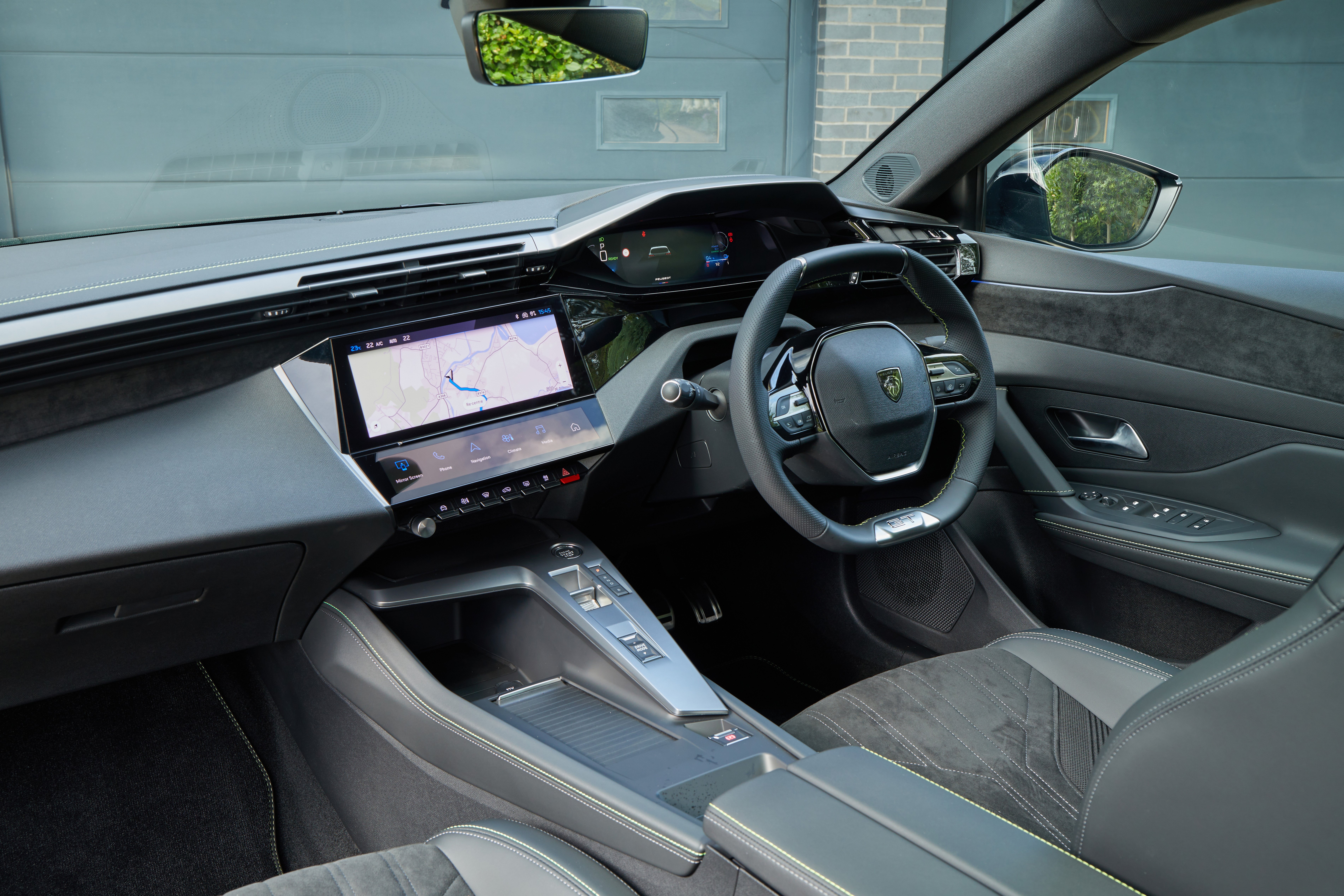
The e-308’s interior is one of the best things about this hatchback. Retaining the same familiar look and feel of other new Peugeots, it can take a little time to get used to with the small steering wheel feeling quite strange at first, but the large digital instrument cluster is one of the best around, and offers far more personalisation than that of rivals.
The quality throughout is excellent, and it certainly has a more upmarket finish than that of the MG4 and Volkswagen ID.3, but it’s not as practical. The 361-litre boot is smaller than petrol versions of the 308, while there are noticeable barriers caused by adapting a conventional car platform, rather than an EV-specific one, most noticeably compromised rear-seat space.
What’s the spec like?

The e-308 is available in a choice of two trim levels – the Allure car we tried or the top-spec GT. Whichever model you go for, the level of standard equipment is impressive, with features including Peugeot’s excellent new 10-inch touchscreen with configurable shortcut buttons, as well as a 10-inch digital instrument cluster and reversing camera. The e-308 also features heated front seats and a heated steering wheel as standard – two things that are usually options on all 308s, regardless of trim.
Upgrade to the top-spec GT and it brings full Matrix LED headlights, a sportier bodykit and Alcantara seats.
Where the e-308 loses some stars is for its price, which starts north of £40,000 even for the standard car. Whichever way you look, it’s a lot of money for a 150bhp hatchback, and when you can have a longer-range MG4 for almost £10,000 less, it makes the Peugeot seem expensive.
Verdict
The Peugeot e-308 carried over many of the firm’s established strengths into the electric hatchback segment. This is an EV that offers impressive efficiency, a stunning interior and more comfort than any of its rivals.
The trouble is that the e-308 does little to stand out, which wouldn’t be such an issue if it wasn’t for its price. At more than £40,000, this Peugeot is significantly more expensive than the excellent MG4, but also rivals from Volkswagen, Cupra and Hyundai, and makes it hard to recommend. If Peugeot could find a way of dropping the price, it would be infinitely more desirable.

